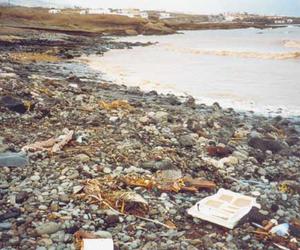Coastal pollution in Cuba
- Submitted by: Luis Manuel Mazorra
- Science and Technology
- 02 / 09 / 2012

Toxic wastes and pollutants that are generated by different processes in terrestrial areas are dumped into the sea. Specifically in Cuba, its geographical costs are the main reservoir and therefore the most damaged area.
Such a feature-explanatory that usually infectious substances are organic-biodegradable, due to being the major component of urban and industrial waste liquids.
Although there is another variety of impurity materials, including potentially toxic chemicals, the truth is that make up the bulk of the landings.
A national inventory of corrupt means indicated that 40 percent of them had no treatment systems for liquid waste, excluding the absence of sewage in small coastal settlements.
The fact is that in open areas, although they receive the noxious barrage from land, including sewage, discharges go directly to the sea and this is responsible for dilution and transport.
For this reason, infection levels are not elevated, except in the estuarine zone near the mouth of rivers, where avalanches create a continuous area, mainly as a sort of pen, which possess a high degree of organic pollution mainly fecal origin.
However, in the bays the loads generated systematically assimilate waste accumulation, due to poor tidal exchange compared to the volume received directly or through the rivers that flow into them.
Also influenced by their own geographical features that are mostly closed bays, with a narrow channel of communication.
In some of them, may be high rates of contamination by organic and inorganic chemical compounds, with a toxic nature.
These ranges of concentrations are in the bays of Havana and Cienfuegos Nuevitas, considered the most contaminated by metals.
The same applies to the one in Havana, Cienfuegos, and Mariel, but in this case hydrocarbon anthropic origin or caused by human activity.
A particular case is that of Levisa, in the province of Holguin, with a marked pollution caused by metallic elements associated with open pit mining.
Other effects on the coastal marine area are related to biodiversity, including urban planning, which helps determine the spatial organization and allocation of land uses, appropriate management and protection of natural resources.
Comments